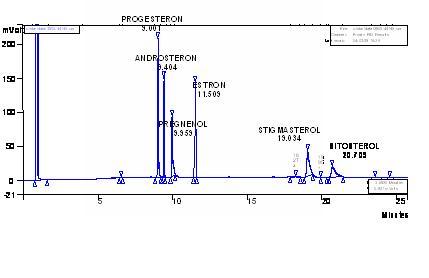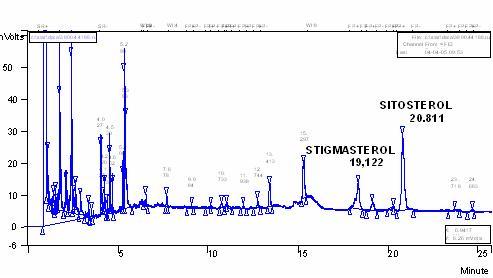One of the most investigated class of natural compounds are the phytoestrogens. Plant contain several different families of natural products among witch are compounds with weak estrogenic or antiestrogenic activity toward mammals cells. These compounds include certain isoflavonoids, flavonoids lignans and coumarins. The best- studied dietary phytoestrogens are the soy isoflavones (genistein and daidzein) as the mainly relevant for the human and animal health. Soy is a very important food for Asian population. Epidemic data indicate that the Asian people have lower rates of osteoporotic fractures, cardiovascular diseases, postmenopausal symptoms and certain cancer than the western population.
Plants which are used in the traditional medicine for the treatment of menstrual pain, as contraceptives, or as menopausal remedies probably contain phytoestrogen compounds. Ferns play important role in folklore medicine (1). Literature data are available for different Asplenium species. Asplenium bulbiferum is rich in flavonoids with antioxidant proprieties and this species is used for nutritive properties by Maori people. Asplenium nidus was used in the traditional Vanuatu medicine as a contraceptive as well as to reverse sterility. In the Italian folk medicine Asplenium trichomanes was used as an expectorant, anti-cough remedy and laxative as well as emmenagogue. In North America the infusion of this species was used as abortifacient and for irregular menses (2).
The aim of our study was to profile steroid, phytoestrogens and lipophilic substances Asplenium cuneifolium, serpentynite ferns from unique habitat occurring in Poland only in Lower Silesia. Plants tested were cultured in vitro on sterile MS medium (3).
Some plants contain steroidal estrogens, however as these are essentially based on the same structures that occur naturally in animals, they are not considered phytoestrogens by the strictest definition (4). Gas chromatography (GC) analyses of methanol extracts of gametophytes Asplenium cuneifolium with using animal sex hormones standards like progesterone, androsteron, estron, pregnenol and plant sterols showed the presence of only common plant sterols: sitosterol and stigmasterol (Fig 1,2). We used most sensitive methods like gas chromatography with mass spectrometry GC-MS to detection lipophilic substance in this fern. Octadecanoic acid, hexadecanoic acid, tocopherol, cholesterol, sitosterol and stigmasterol were detected.  Fig.1.Retention time of standards Fig.1.Retention time of standards

Fig.2.Retention time of Asplenium cuneifolium compounds.
References
(1) Yee Lain H., et al. Biosci.Biotechnol. Biochem, 73(6)(2009) 1362-1366
(2) Dall’Acqua et al. Journal of Ethnopharmacology 122(2009)424-429
(3) Murashige T, Skoog F., Physiol. Plant 15(1962) 473-497
(4) Doxon R. Annu. Rev. Plant Biol. 55(2004) 225-61 |